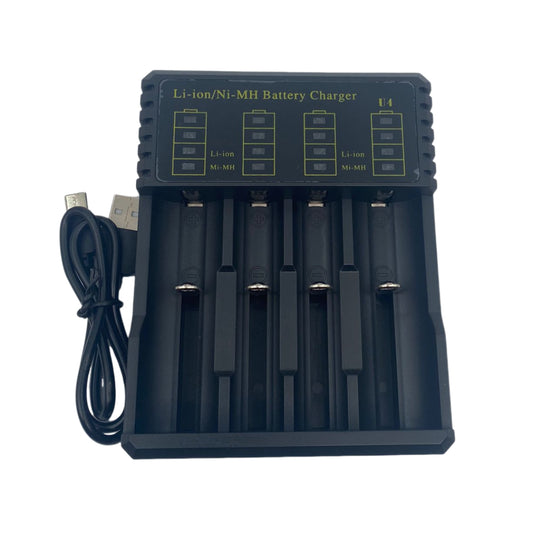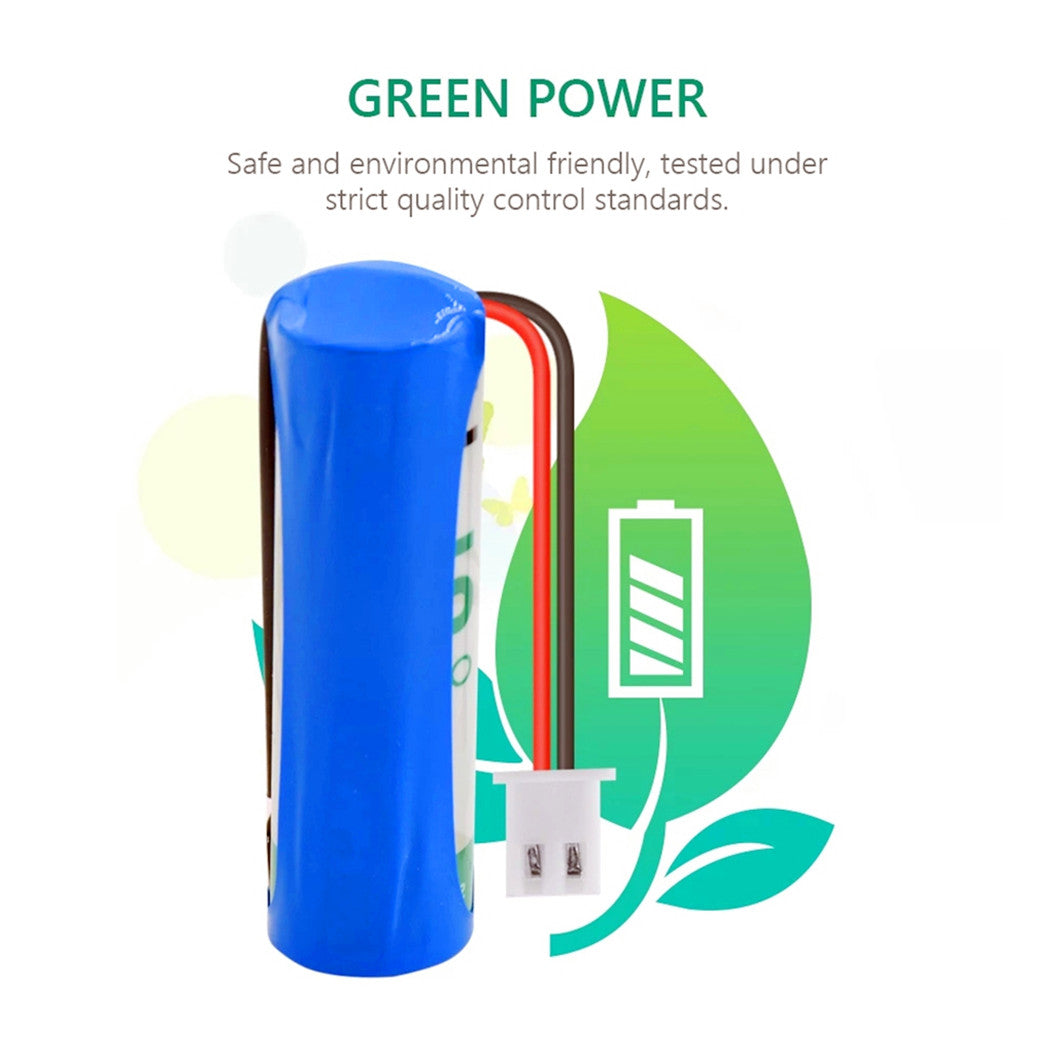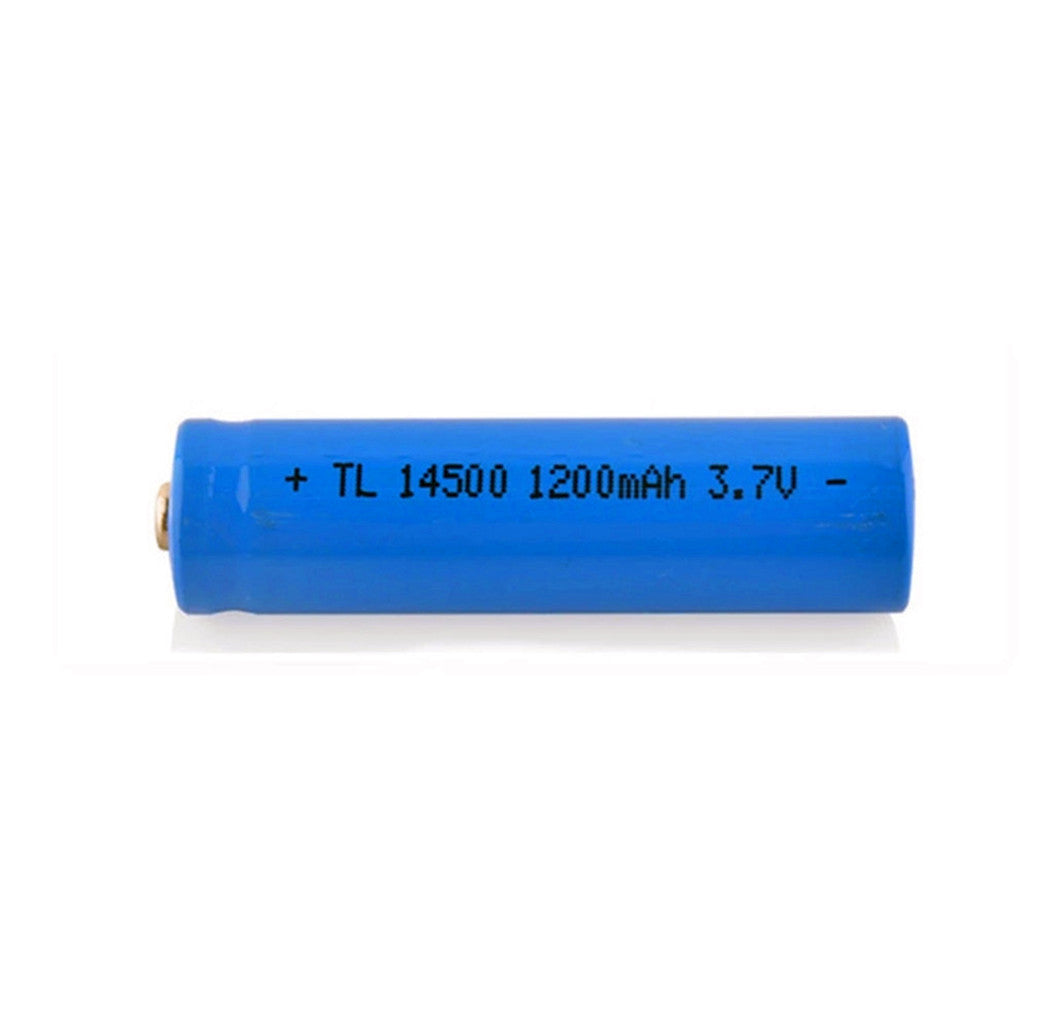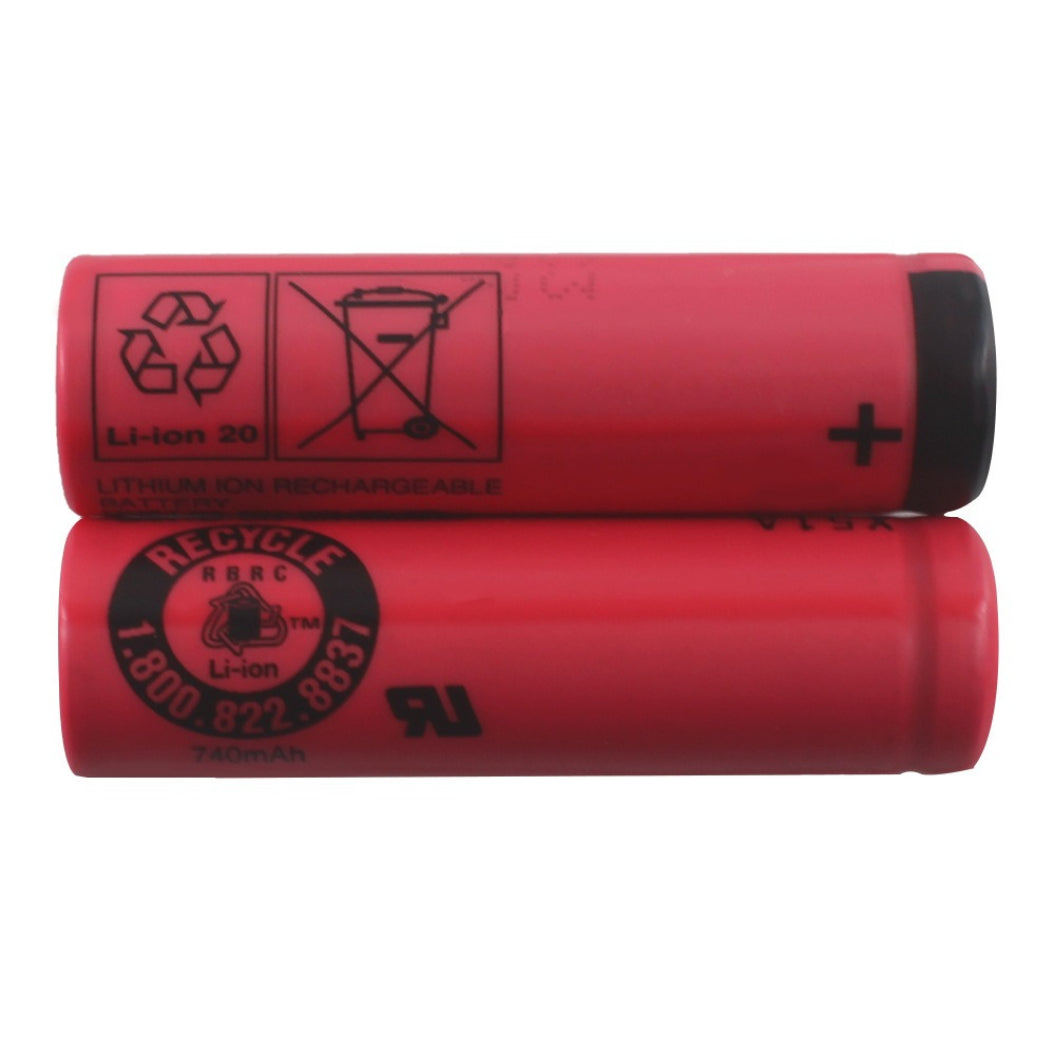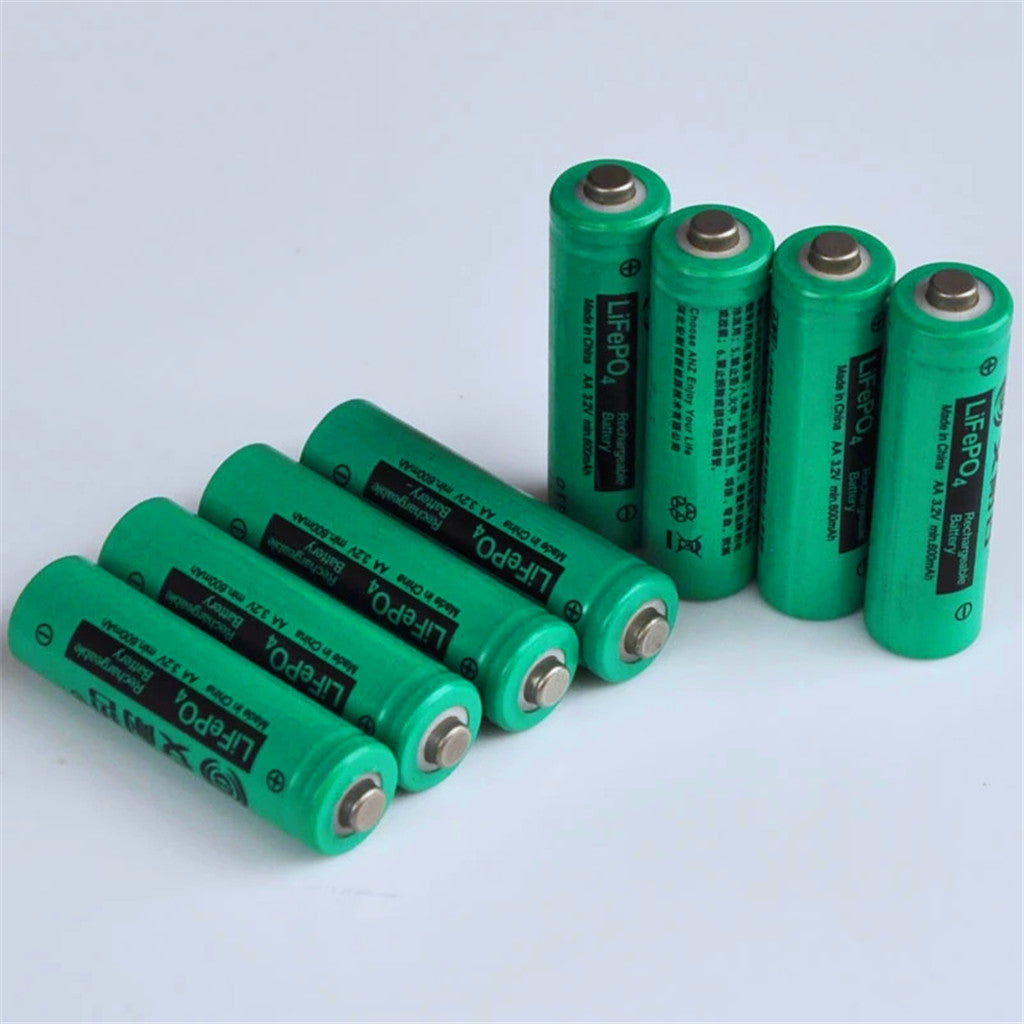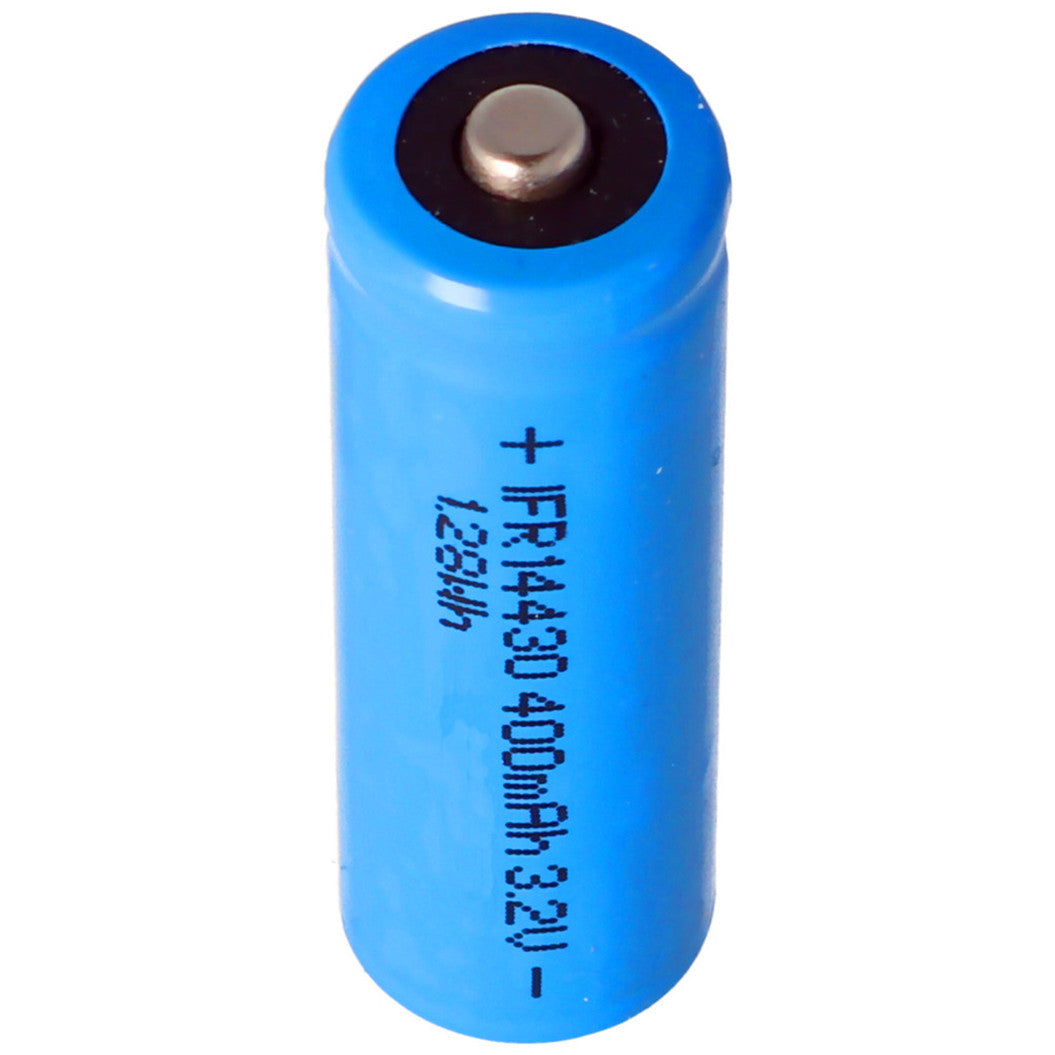-
공급업체:BATTERYINT
2개 세트 US14500VR2 14500 3.7V AA 680mAh 전동 칫솔, 면도기, 헤어 클리퍼용 리튬 이온 배터리
- 정가
- $10.79
- 정가
-
- 할인가
- $10.79
- 단가
- 단위
2개 세트 US14500VR2 14500 3.7V AA 680mAh 전동 칫솔, 면... -
공급업체:BATTERYINT
3.6V 14500 2000mAh Li-SOCl₂ AA 사이즈 ER14505 배터리 셀 Mac 컴퓨터, 리모컨, 손전등용 배터리 교체용
- 정가
- $7.99
- 정가
-
- 할인가
- $7.99
- 단가
- 단위
3.6V 14500 2000mAh Li-SOCl₂ AA 사이즈 ER14505 배터리 ... -
공급업체:BATTERYINT
AA 14500 1200mah 3.7V 리튬 이온 충전식 배터리 2개
- 정가
- $6.99
- 정가
-
- 할인가
- $6.99
- 단가
- 단위
AA 14500 1200mah 3.7V 리튬 이온 충전식 배터리 2개 기능: 3.7... -
공급업체:BATTERYINT
7.4V 650mAh 14500 리튬 폴리머 배터리 - U12A, Syma 2310, Syma F1, Huajun YD712, YD921용
- 정가
- $13.00
- 정가
-
- 할인가
- $13.00
- 단가
- 단위
7.4V 650mAh 14500 리튬 폴리머 배터리 - U12A, Syma 2310,... -
공급업체:BATTERYINT
2개 3.6V 740mAh 교체 배터리 브라운 Oral-B I06 I07 I08 I09 전동 칫솔용
- 정가
- $13.99
- 정가
-
- 할인가
- $13.99
- 단가
- 단위
2개 3.6V 740mAh 교체 배터리 브라운 Oral-B I06 I07 I08 I0... -
공급업체:BATTERYINT
3PCS 14500 500mAh 3.7V 리튬 이온 충전식 배터리 NTC 3선 포함
- 정가
- $23.21
- 정가
-
- 할인가
- $23.21
- 단가
- 단위
3PCS 14500 500mAh 3.7V 리튬 이온 충전식 배터리 NTC 3선 포함... -
공급업체:BATTERYINT
4pcs IFR 3.2V LiFePo4 AA 600mAh 14500 충전식 리튬 이온 배터리
- 정가
- $12.99
- 정가
-
- 할인가
- $12.99
- 단가
- 단위
4pcs IFR 3.2V LiFePo4 AA 600mAh 14500 충전식 리튬 이온... -
공급업체:BATTERYINT
2개입 14500 3.7V 1500mAh 리튬이온 배터리 - 손전등, 헤드램프, 마이크, 라디오, 게임패드 등용
- 정가
- $8.99
- 정가
-
- 할인가
- $8.99
- 단가
- 단위
2개입 14500 3.7V 1500mAh 리튬이온 배터리 - 손전등, 헤드램프, 마이... -
공급업체:BATTERYINT
3PCS 14500 500mAh 3.7V Li-Ion 배터리 NTC 3-와이어
- 정가
- $19.99
- 정가
-
- 할인가
- $19.99
- 단가
- 단위
3PCS 14500 500mAh 3.7V Li-Ion 배터리 NTC 3-와이어 제품 ... -
공급업체:BATTERYINT
IFR 14430 400mAh 3.2V LiFePO4 배터리 (버튼형 탑, 무보호)
- 정가
- $5.99
- 정가
-
- 할인가
- $5.99
- 단가
- 단위
IFR 14430 400mAh 3.2V LiFePO4 배터리 (버튼형 탑, 무보호) ... -
공급업체:BATTERYINT
3개 7.4V 1200mAh 14500 리튬 폴리머 배터리 전동 장난감 워터 볼릿 건용
- 정가
- $14.00
- 정가
-
- 할인가
- $14.00
- 단가
- 단위
3개 7.4V 1200mAh 14500 리튬 폴리머 배터리 전동 장난감 워터 볼릿 건... -
공급업체:BATTERYINT
RC 장난감 자동차 용 TKKJ H116 RC 보트 헬리콥터 용 3.7V 650mAh 14500 리튬 폴리머 배터리 2 개
- 정가
- $13.50
- 정가
-
- 할인가
- $13.50
- 단가
- 단위
RC 장난감 자동차 용 TKKJ H116 RC 보트 헬리콥터 용 3.7V 650mAh...
표시 1 -12 의 20 항목
1. 14500과 AA 배터리의 차이점은 무엇입니까?
14500과 AA 배터리는 크기가 비슷하지만 구성, 전압, 충전성이 다릅니다. AA 배터리는 일회용 알카라인(1.5볼트) 또는 충전식 NiMH(1.2볼트)일 수 있습니다.
반대로, 14500 리튬 배터리는 3.7볼트의 더 높은 전압을 가지고 있어 더 큰 에너지 밀도와 전력을 제공합니다. AA 배터리는 일회용과 충전식 유형이 모두 있는 반면, 14500 리튬 이온 배터리는 일반적으로 충전식이며 수백 번의 충전 주기를 견딜 수 있습니다.
반대로, 14500 리튬 배터리는 3.7볼트의 더 높은 전압을 가지고 있어 더 큰 에너지 밀도와 전력을 제공합니다. AA 배터리는 일회용과 충전식 유형이 모두 있는 반면, 14500 리튬 이온 배터리는 일반적으로 충전식이며 수백 번의 충전 주기를 견딜 수 있습니다.
2. AA 배터리를 14500 배터리로 교체할 수 있나요?
일부 기기에서는 AA 배터리를 14500 리튬 배터리로 교체할 수 있지만, 전환하기 전에 몇 가지 요소를 고려하세요. 전압 차이가 상당합니다. AA 배터리는 1.5볼트를 제공하는 반면 14500 배터리는 3.7볼트를 제공하므로 낮은 전압으로 설계된 기기를 손상시킬 수 있습니다.
기기가 고전압 14500 충전식 배터리를 지원하는지 확인하세요. 용량(mAh)과 방전 속도도 다르므로 기기 성능에 영향을 미칩니다. 일회용 AA 배터리와 달리 14500 리튬 이온 배터리는 충전식이므로 올바른 충전기를 사용하고 제조업체의 지침을 따르세요.
기기가 고전압 14500 충전식 배터리를 지원하는지 확인하세요. 용량(mAh)과 방전 속도도 다르므로 기기 성능에 영향을 미칩니다. 일회용 AA 배터리와 달리 14500 리튬 이온 배터리는 충전식이므로 올바른 충전기를 사용하고 제조업체의 지침을 따르세요.
3. 14500 리튬 이온 배터리는 얼마나 오래 지속되나요?
14500 리튬 이온 배터리의 수명은 사용, 용량, 유지 관리를 포함한 다양한 요인에 따라 달라집니다. 일반적으로 14500 리튬 이온 배터리는 300~500회 충전 주기를 견딜 수 있습니다. 시간적으로는 1~3년 동안 정기적으로 사용할 수 있습니다. 과충전 및 극한 온도를 피하는 것과 같은 적절한 관리가 배터리 수명을 연장하는 데 도움이 될 수 있습니다.
4. 14500 배터리가 부풀어 오르는 것을 어떻게 방지할 수 있나요?
모델 14500 리튬 이온 배터리의 팽창을 방지하려면 과충전을 피하고 배터리 사양에 맞는 배터리 충전기를 사용하고 배터리가 실온에서 충전 및 보관되었는지 확인하고 배터리의 과방전을 피하십시오.
배터리에 손상 징후가 있는지 정기적으로 확인하고 배터리가 부풀기 시작하면 파열이나 누출을 방지하기 위해 배터리 사용을 중단하십시오. 배터리를 장기간 사용하지 않을 경우 충전 수준이 약 50%인 시원하고 건조한 곳에 보관해야 합니다.
배터리에 손상 징후가 있는지 정기적으로 확인하고 배터리가 부풀기 시작하면 파열이나 누출을 방지하기 위해 배터리 사용을 중단하십시오. 배터리를 장기간 사용하지 않을 경우 충전 수준이 약 50%인 시원하고 건조한 곳에 보관해야 합니다.
5. 14500 배터리가 녹슬지 않게 하려면 어떻게 해야 하나요?
모델 14500 리튬 이온 배터리의 녹을 방지하려면 배터리를 습기와 습도가 없는 건조한 환경에 보관해야 합니다. 방습 용기나 가방에 보관하면 추가 보호가 가능할 수 있습니다.
또한 배터리 케이스에 균열이나 손상이 있으면 습기가 공기가 들어와 녹이 슬 위험이 커질 수 있으므로 정기적으로 배터리 케이스를 검사하여 손상 여부를 확인하세요.
또한 배터리 케이스에 균열이나 손상이 있으면 습기가 공기가 들어와 녹이 슬 위험이 커질 수 있으므로 정기적으로 배터리 케이스를 검사하여 손상 여부를 확인하세요.
6. 14500 배터리 누출을 방지하려면 어떻게 해야 하나요?
14500 리튬 배터리의 누출을 방지하려면 고품질 배터리를 선택하고 해당 모델에 적합한 충전기로 올바르게 충전하십시오. 과열, 물리적 손상 또는 배터리를 극한 온도에 노출시키지 마십시오. 배터리에 손상이나 비정상적인 팽창이 있는지 정기적으로 검사하고 문제가 발견되면 즉시 사용을 중단하십시오.
14500 충전식 배터리를 장기간 사용하지 않을 경우 시원하고 건조한 곳에 보관하고 30~50% 충전하여 장시간 완전히 방전된 상태로 두지 않도록 하십시오. 이러한 조치를 취하면 배터리 누출 위험을 효과적으로 줄일 수 있습니다.
14500 충전식 배터리를 장기간 사용하지 않을 경우 시원하고 건조한 곳에 보관하고 30~50% 충전하여 장시간 완전히 방전된 상태로 두지 않도록 하십시오. 이러한 조치를 취하면 배터리 누출 위험을 효과적으로 줄일 수 있습니다.
7. 14500 배터리와 18650 배터리의 차이점은 무엇인가요?
18650과 14500 배터리의 주요 차이점은 크기와 용량입니다. 18650 배터리는 직경 18mm, 길이 65mm의 표준 크기로 제공되는 반면, 14500 충전식 배터리는 직경 14mm, 길이 50mm로 AA 배터리와 크기가 비슷합니다.
또한, 18650 배터리는 일반적으로 1800mAh에서 3500mAh 범위의 더 높은 용량을 가지고 있는 반면, 14500 배터리는 일반적으로 700mAh에서 900mAh 사이의 용량을 가지고 있습니다. 즉, 18650 배터리는 더 긴 수명을 제공할 수 있지만, 더 큰 크기 때문에 더 작은 배터리가 필요한 장치에는 적합하지 않습니다.
또한, 18650 배터리는 일반적으로 1800mAh에서 3500mAh 범위의 더 높은 용량을 가지고 있는 반면, 14500 배터리는 일반적으로 700mAh에서 900mAh 사이의 용량을 가지고 있습니다. 즉, 18650 배터리는 더 긴 수명을 제공할 수 있지만, 더 큰 크기 때문에 더 작은 배터리가 필요한 장치에는 적합하지 않습니다.








